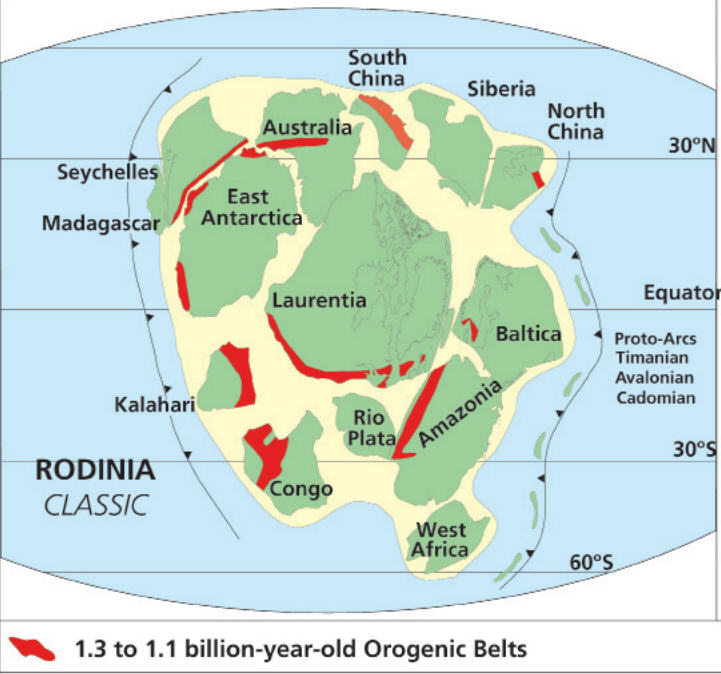The Qinling-Dabie orogenic complex, part of a large east-west mountain range in the heart of China, plays a key role in helping scientists understand the formation and breakup of the supercontinent Rodinia, according to a new paper.
Rodinia (Russian for "homeland") was Earth's first supercontinent. It hails from around 1.1 billion years ago and was formed when three or four existing continents collided in a large mountain-building episode called the Grenville Orogeny. There are also earlier hypothesized supercontinents, including a tiny one that is only considered a supercontinent because it was alone.
Rodinia lasted around 350 million years and, according to Burke Museum of Natural History and Culture, the east coast of present North America was probably adjacent to western South America. The west coast of North America lay next to what is today Australia and Antarctica. 
The classic reconstruction of supercontinent Rodinia, which came together in a global collision event, 1.2 to 1.0 billion years ago, forming a number of mountain-building (orogenic) belts where continents collided (including the Grenville Orogeny rocks). Rodinia existed as a single continent for about 250 million years. (KEY: Laurentia = proto North America; Baltica = proto Eastern Europe; Rio Plata and Amazonia = proto South America; Kalahari, Congo, and West Africa—here widely dispersed—eventually become proto Africa.) Images © Terje Torsvik. Credit and link: City College of San Francisco
Likewise, the exact configuration and geodynamic history of the Qinling-Dabie orogenic complex and the surrounding region are not fully known. Contributing a piece to the puzzle, Bader et al. used uranium-thorium-lead geochronology-from both published studies and new data-to investigate the Neoproterozoic (1 billion years ago to 700 million years ago) evolution of the Qinling-Dabie orogenic collage.
The authors outline a tectonic model for evolution of the Qinling-Dabie orogen, placing it into the context of the evolution of Rodinia, which formed around 1 billion years ago and broke up around 700 million years ago.
They believe their synthesis could help researchers gain a more complete understanding of the geologic history of one of Earth's earliest supercontinents.
Citation: Thomas Bader, Lothar Ratschbacher, Leander Franz, Zhao Yang, Mandy Hofmann, Ulf Linnemann, Honglin Yuan, 'The Heart of China revisited, I. Proterozoic tectonics of the Qin Mountains in the core of supercontinent Rodinia', Tectonics, doi: 10.1002/tect.20024





Comments